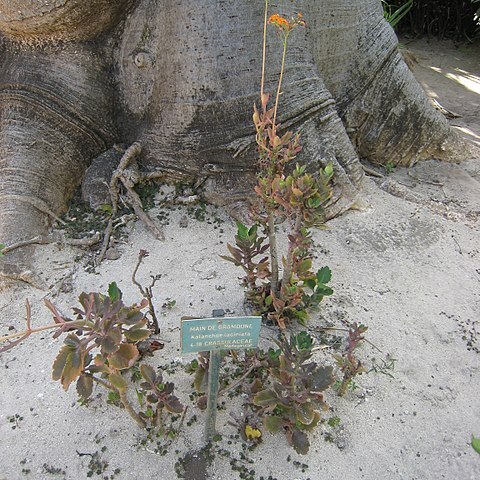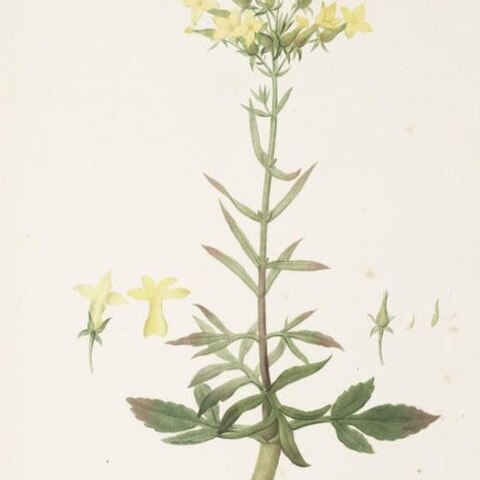Leaves glabrous, succulent, flat, membranous and pale to dark green on drying, petiolate, up to 23·5 cm. long (with the petiole); lamina usually divided (sometimes those of lower and the uppermost pairs simple, rarely all simple), 3-sect or-foliolate to pinnatifid or pinnate, the primary segments simple, bifid or 3-sect or pinnatisect, various combinations of foliar division occurring sometimes in the same specimen; foliar segments up to 14 c. long and 4 cm. broad, the terminal one the largest, ovate-lanceolate to linear, acute at the apex, petiolulate or attenuate towards the base, entire, dentate, or shallow to deeply lobed; main rachis up to 4 mm. broad, canaliculate; petiole up to 6(8) mm. long, flattish, canaliculate, enlarged into a clasping base but not connate with the opposite one.
Plants glabrous, or pubescent distally. Stems 6 dm. Leaf blades ovate or obovate, 5-14 cm, margins entire, crenate-dentate, or lobed, apex obtuse. Cymes lax, glabrous or pubescent, not glandular. Pedicels ca. 3 cm. Flowers fragrant; sepals spreading, linear, 10 mm; corolla yellow or yellowish orange, flask-shaped, tube 20 mm, lobes wide-spreading, 25 mm. 2n = 34, 68.
Flowers erect in ± dense cymes forming corymbs either terminal and solitary or grouped in large panicle-like inflorescences up to 40 x 30; branches puberulous-glandular, at ±45° with the axis, naked in the lower 3/4-1/2, the lower ones up to 29 cm. long; internodes of panicle up to 15·5 cm. long; pedicels up to 10 mm. long, glandular-puberulous.
Corolla 12-14(16) mm. long, yellow to yellow-green or orange, sparsely puberulous on the outside; tube rounded below, then narrowing gradually to above the anthers, hyaline or yellowish, 4-gonous and with 4 longitudinal raised nerves at the angles in fruit; corolla-lobes 3·5-4·5 x 1·5-1·75 mm., oblong or ovate-lanceolate, apiculate.
Stem erect, simple, terete, smooth, reddish, leafless at fruiting time, glabrous below, ± puberulous above, the hairs usually c. 0·5 mm. long, straight, spreading, capitate-glandular or with indistinct terminal gland, hyaline to pale tawny; lower internodes 0·3-4 cm. long, the upper ones up to 12 cm. long.
Calyx (2·5)4-5·5(7) mm. long, sparsely pubescent-glandular, thin, pale green, sometimes lineolate with brownish-red; tube 1-1·5 mm. high; sepals lanceolate-triangular, ovate or oblong, acute, separated by broad sinuses.
Filaments of the upper stamens c. 1 mm. long; anthers ± 0·5 mm. long, included, the upper ones c. 1·5 mm. below the base of corolla-lobes.
Follicles (5)6·5-7·25 mm. long, fusiform, very attenuate and acute; styles 0·75-1·25(1·5) mm. long.
A succulent perennial (or also biennial?) up to 1·20 m. high (with the inflorescence).
Scales 2-2·25 x 0·25 mm., linear, acute.
Flowers yellow, orange, or magenta.
Herb, to 6 ft. high


